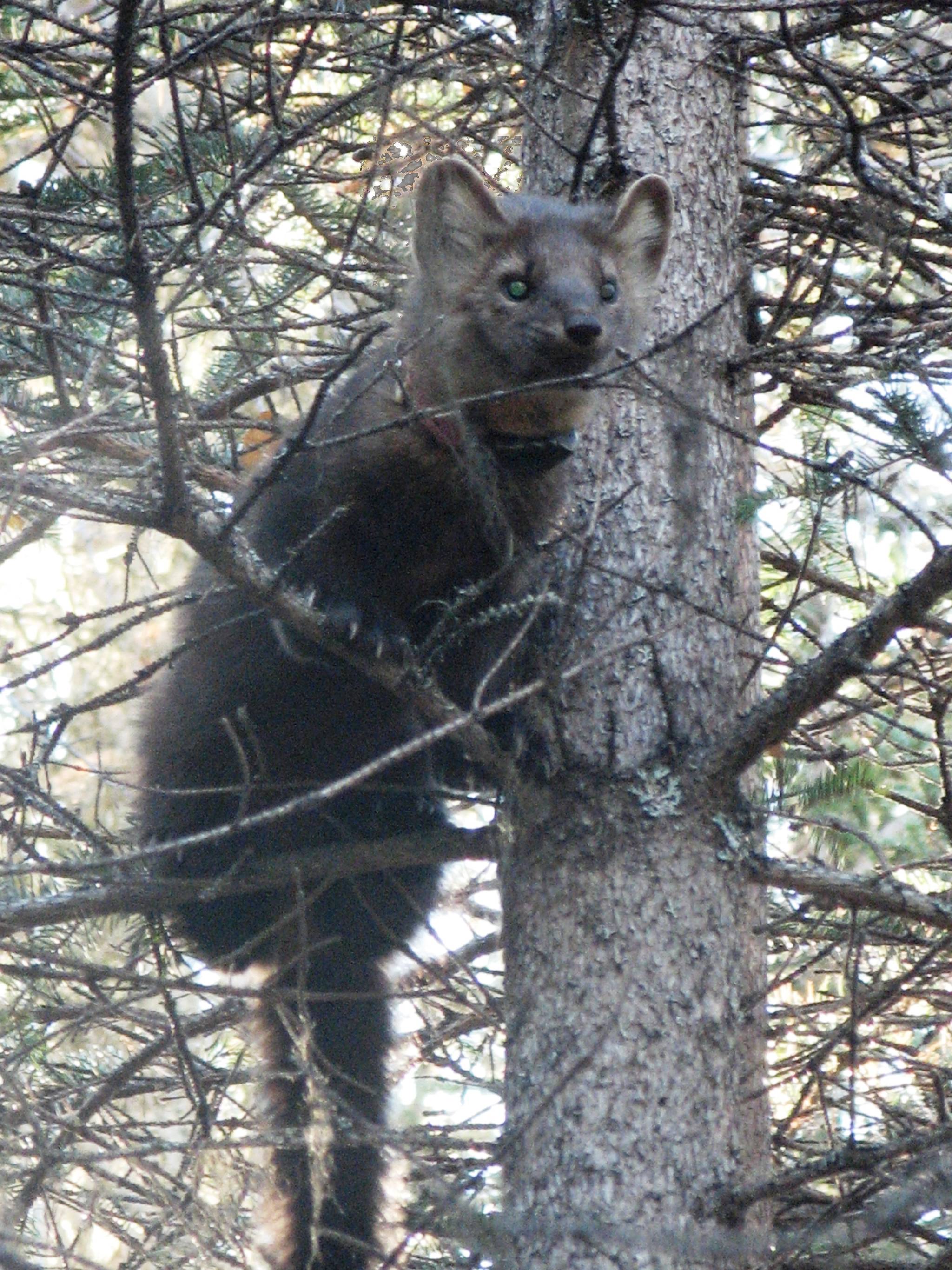I skied Resurrection Trail from Hope to Cooper Landing, a fun adventure that I haven’t done in several years. On both trips, I saw lots of American marten tracks in the snow along Resurrection Creek and even more on the ridges above as the trail climbs toward Devils Pass.
Marten have always been abundant in the Kenai Mountains, at least through the last century. The difference between the not-so-distant past and now is that marten were almost nonexistent on the western Kenai Lowlands when I skied through Devils Pass more than a decade ago, but are much more common nowadays.
Biologists on the Kenai National Wildlife Refuge monitor furbearer harvest by trapping, including the take of marten. From 1960 through 2000, only 19 marten total were reported trapped on the refuge. But since 2002, 93 marten have been harvested, with 18 taken just during the 2009-10 season, almost as many in that one year as in the last 4 decades of the 20th century.
What changed? This question was asked by Dr. Andy Baltensperger, a former graduate student at Colorado State University, who studied the behavior and distribution of marten on the Kenai Peninsula during 2007-08. And his answer was published just last month in the Journal of Mammology.
Andy initially thought that snow conditions might have changed in such a way that marten could not only survive in the Kenai Lowlands but successfully reproduce. Over most of their continental distribution, marten rely on the winter snowpack to carry them through the winter. They spend much of their time under the snow, preying upon voles and other small mammals, and resting in subnivean dens that are much warmer than ambient air temperatures. However, the sparse data we have from snow-recording stations on the peninsula strongly suggest that snow pack has certainly not increased in recent decades but may have actually decreased.
So something else was allowing marten to thrive in recent years on the Kenai Lowlands. Andy needed both historic and contemporary data on marten occurrences to model which variables affected past and future distributions. He used a “heuristic” approach in which data from multiple sources were modeled with RandomForest, a machine-learning algorithm. In this case, Andy compiled records of marten occurrences between 1906 to 2010 from museum records at the University of Alaska Fairbanks (UAF) and the University of California Berkeley, sealing records from the Alaska Department of Fish &Game, Kenai Refuge furbearer records, interviews with local trappers, and a 1989 study of marten in the Surprise Creek watershed. Additionally, Andy identified marten tracks in still photos extracted from a 2006 aerial digital videography survey, and from his own live-trapping efforts in lowland and mountain habitats on the Kenai Refuge in 2007-08.
His analysis revealed an ongoing westward expansion of American marten on the Kenai Peninsula since circa 1988, but principally during the past 15 years, which coincides well with Kenai Refuge harvest records. His models suggested that several factors, including soil and landcover, influenced marten distributions. But warming temperatures, particularly at night during the winter, is the likely explanation for why marten were able to colonize the western peninsula despite any decreases in snow cover. Average January temperatures at the Kenai Airport in January have increased 7 degrees F over the past 50 years!
Marten in the Kenai Lowlands were also able to take advantage of red squirrel middens, the pile of spruce cone bracts left behind after their seeds have been eaten. Temperature recorders indicated that rest sites more than a foot deep in middens adequately insulated marten even in the absence of snow cover.
Coincidentally, other research published in 2008 showed that the average skull length of marten in Alaska, based on 400 museum specimens at UAF, has increased by 0.03 percent over the past 50 years. This increase in body size is attributed to shorter, warmer winters that have allowed for accelerated plant growth and a resultant increase in the size and availability of voles and shrews. What a tangled ecological web climate change can weave!
In a warming climate, species are expected to move northward in latitude and upward in elevation. This is indeed the case with marten on the Kenai Peninsula. They appear to have successfully spread westward into the Kenai Lowlands from long-standing suitable habitat in the Kenai Mountains. Some ecologists would label American marten a “winner” in the context of how climate change impacts species.
However, the Kenai is separated from mainland Alaska by a mostly ice-covered, 10-mile-wide isthmus between Portage and Whittier that constrains plants and animals from migrating onto the peninsula. Species moving up the Alaska Coast Range that can’t fly may not make it to the Kenai Peninsula even if our climate changes enough to sustain them. In that scenario, it’s not so much that those species are “losers”, but perhaps we lose out by not having a biologically more diverse landscape in which to live.
Dr. John Morton is the supervisory biologist at Kenai National Wildlife Refuge. Find more information about the Refuge athttp://www.fws.gov/refuge/kenai/ or http://www.facebook.com/kenainationalwildliferefuge.

